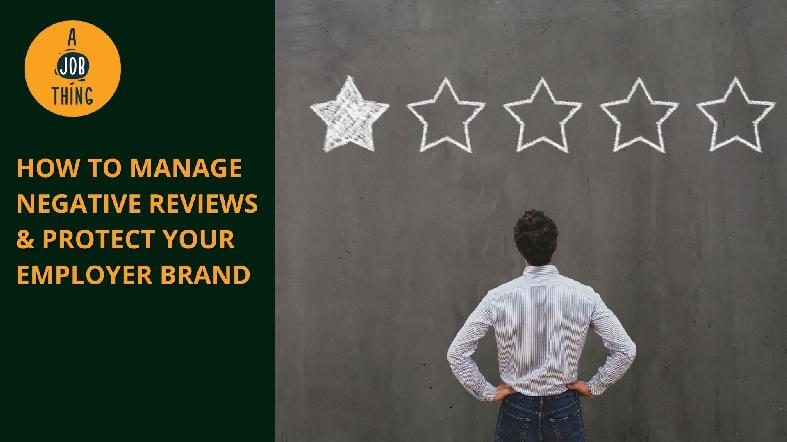
How to Manage Negative Reviews and Protect Employer Brand
Are You Hiring?
Find candidates in 72 Hours with 5+ million talents in Maukerja Malaysia & Ricebowl using Job Ads.
Hire NowWhen was the last time you visited an employee review site to see if someone had reviewed your organisation? If you say "never," you're passing on a golden opportunity to understand what employees have to say about your company and carefully respond to complaints and make changes that could improve your corporate culture.
Employee review sites are growing in popularity among applicants as they use social media to explore potential companies and comparison shop before applying for a job. These websites provide basic info about the organisation, job roles, wages, and reviews.
Some websites allow current and past employees to anonymously review their company on a scale of 1 to 5 and submit at least one "positive" and one "negative" of working for the company.
Should you monitor these employee review websites?
Company executives should continuously monitor employee review sites. Though larger organisations will have more reviews, it only takes one person to post a review for your organisation to begin developing a bad reputation.
Employee review websites are becoming a mainstay of the job search process for employees of all ages, so companies must develop a strategy to track them and even seek ways to boost their ratings. Many review sites are overlooked or unverified, which can harm the brand in the long run.
Keeping an eye on these sites should be part of a broader social media audit that organisations should do regularly to learn how people see the employer brand and find any negatives that are being highlighted.
Here are some ideas to implement a strategy to track employee review sites:
1. Assign specific employees to monitor employee review websites
Don't delegate social media to interns or junior-level employees. It is a mistake to delegate this job to the most junior personnel, as junior employees lack the foresight and intuition needed to make competitive business judgments.
Ideally, these sites should be monitored collaboratively by one junior-level and one senior-level employee.
2. Set up alerts to notify when new reviews are posted
Speed is everything when it comes to social media, so site monitoring must be a consistent duty.
3. Respond to new postings as soon as possible
Whenever a review is written, whether positive or bad, the employer should address it right away.
If the site allows you to respond, verify the comments, and explain what you're doing right and the efforts you're taking to improve in the areas that have been criticised.
4. Communicate with your employees.
Speaking with internal personnel about a "negative" that was written about your company might help you understand the scope of the problem and how to handle it.
If you have one or a few bad managers, you must address the issue. A timely follow-up can help to avoid a full-blown PR disaster.
5. Encourage employees to participate in employee review sites.
Inform all employees that you are watching these sites and value employee feedback. Encourage staff to share their positive reviews; failing to do so represents a missed opportunity. Bringing good reviews to light would benefit your employer brand.
6. Ensure you have a good exit interview procedure
Provide leaving employees with a platform to air their grievances with the organisation, so they have an outlet before they quit and don't feel it's necessary to complain on such sites.
Once you've established a procedure for monitoring employee review sites, keep in mind that negative feedback should not be taken to heart and should instead be used to strengthen company culture. More desirable job seekers will be drawn to your organisation as more positive reviews are posted.
Monitoring these sites can not only help you develop your brand, but it can also help your organisation with retention difficulties. Ignoring these websites is not the solution; however, learning from them and utilising them to your advantage will benefit your organisation in the long term.
Source: ASAE Center

